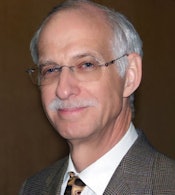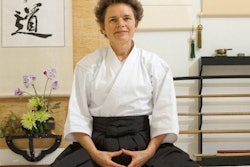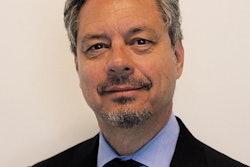
That stress you're feeling isn't all in your head. Diagnostic radiologists are vulnerable to burnout, with nearly half showing symptoms in a recent study. Fortunately, there are six steps you can take to fight burnout, according to a new report from the American College of Radiology's Commission on Human Resources.
A 2015 survey showed that burnout of radiologists was seventh highest among all physicians, compared with being 18th highest just two years earlier. What's more, a 2014 survey found that just slightly more than one-third of radiologists (37%) said they were happy at work.
 Dr. Jay Harolds of Michigan State University.
Dr. Jay Harolds of Michigan State University.Burnout is a problem for individuals, but it can also have significant negative consequences for radiology practices and their patients, wrote a team led by Dr. Jay Harolds of Michigan State University in an article published in the Journal of the American College of Radiology (April 2016, Vol. 13:4, pp. 411-416).
"Burnout can have adverse effects on professionalism, academic and clinical performance, patient safety, interpersonal relationships, personnel retention, and patient satisfaction," the group wrote.
What is burnout?
Burnout is a mix of emotional exhaustion, a decreasing sense of accomplishment, and depersonalization -- that is, a negative and detached attitude toward oneself and others, Harolds and colleagues wrote. It can be caused by many factors:
- Declining income
- Inadequate training/skills for the job
- Isolation in the workplace
- Long hours
- Poor intellectual stimulation
- Poor relationships with colleagues and patients
- Severe time constraints for work output
- Too much night call
- Unfair supervisors
- Work overload
Other risk factors include making medical errors, having struggles between work and home, poor work and lifestyle balance, and not taking care of one's physical and emotional needs. Personality traits such as being perfectionistic, self-critical, or idealistic don't help either, the group wrote.
"Decreasing reimbursements mean that in order to make the same amount of income, radiologists need to read more studies," Harolds told AuntMinnie.com. "Some do this to maintain a particular lifestyle, but others do it because medical school put them into $200,000 worth of debt. As well, technology like PACS has led to greater efficiency, but also to more isolation, since interactions with referring physicians are rare."
Avoiding burnout
Harolds and colleagues listed six potential risk factors for burnout and ranked them by order of importance. The team then offered suggestions for ways to reduce burnout risk:
- Hire adequate staff. Not having enough radiologists to do the work of a practice is a key factor in burnout. "It may be helpful to offer to pay one or more members of the radiology group to work one or multiple additional hours as a volunteer rather than routinely requiring all the radiologists to work longer," the authors wrote.
- Mitigate stress. High-stress environments make doctors 15 times more likely to develop burnout. "Appropriate scheduling, time for adequate rest, a reasonable pace of work, and fairness in the workplace are important for preventing burnout," they wrote.
- Establish a sense of control. Burnout arises when radiologists aren't involved in their practice's decision-making, when there's poor communication, and when staff achievements aren't acknowledged. "Satisfaction in the workplace is high in organizations that emphasize teamwork, empower healthcare professionals by involving them in decision-making, recognize good work ... and have excellent communication," according to the authors. They suggested that practices give their radiologists credit for contributions beyond clinical duties, offer mentoring programs, and provide a way for them to identify areas of dissatisfaction -- and then address them.
- Reduce night and weekend call duties. Some practices hire full- or part-time radiologists to handle night and weekend shifts, establish a reading station in another time zone, or make shifts shorter to mitigate this problem.
- Encourage a balanced lifestyle. Studies have found that one of the best ways to prevent and treat physician burnout is to seek a balanced lifestyle, including physical, emotional and spiritual balance; taking care of oneself; and getting adequate time off. "A radiologist should seek to maximize time spent in various activities that he or she finds important," the authors wrote.
- Improve efficiency. Ideas for improving radiologist efficiency include hiring staff for dictation; using radiologist assistants, nurse practitioners, or physician assistants; and decreasing the amount of administrative work radiologists do.
Practices should also help their radiologists set reasonable financial expectations and goals, reduce their isolation, and even hire professional help if needed, such as an organizational psychologist, Harolds and colleagues wrote. Another resource is the American Medical Association, which has an online module specifically about preventing physician burnout. The module includes the "Mini Zero Burnout Survey," a free tool that helps track workplace stress among practice members.
Awareness is key
The Commission on Human Resources would like the radiology community to become more aware of the problem of burnout -- and take action to address it, Harolds said.
"We've got to help radiologists with their lifestyle balance," he said. "If you're constantly under tremendous work pressure, and you don't have time for your family, for exercise, for activities you enjoy, that's not a good recipe for health or happiness. The radiology community as a whole really needs to acknowledge this problem."




















